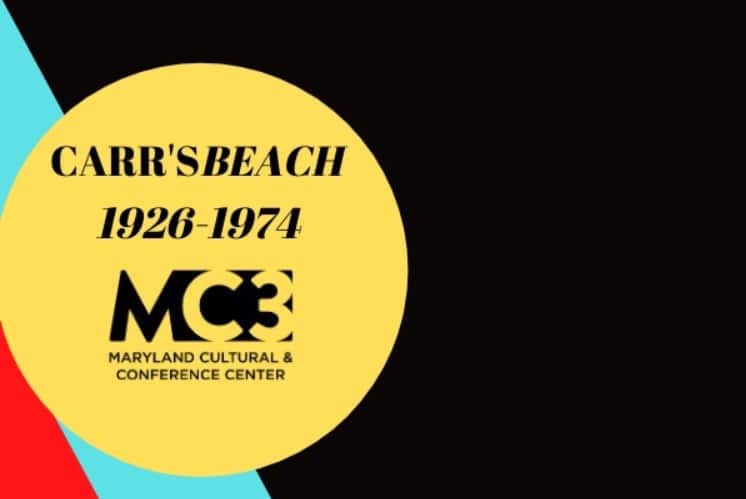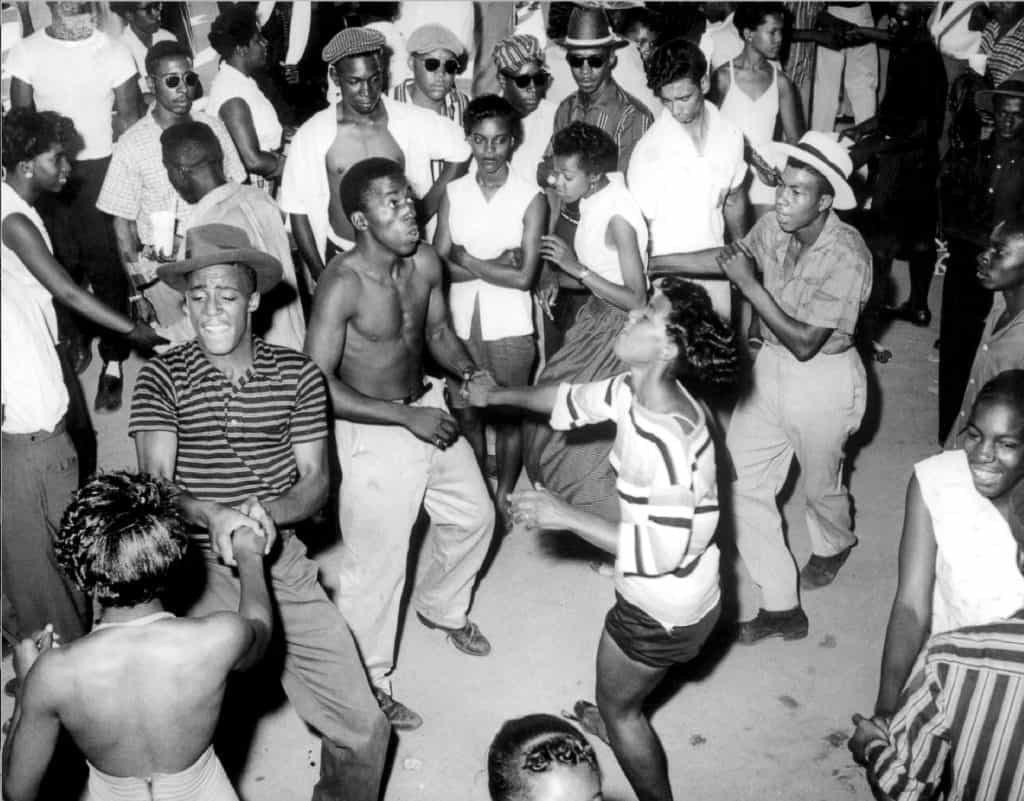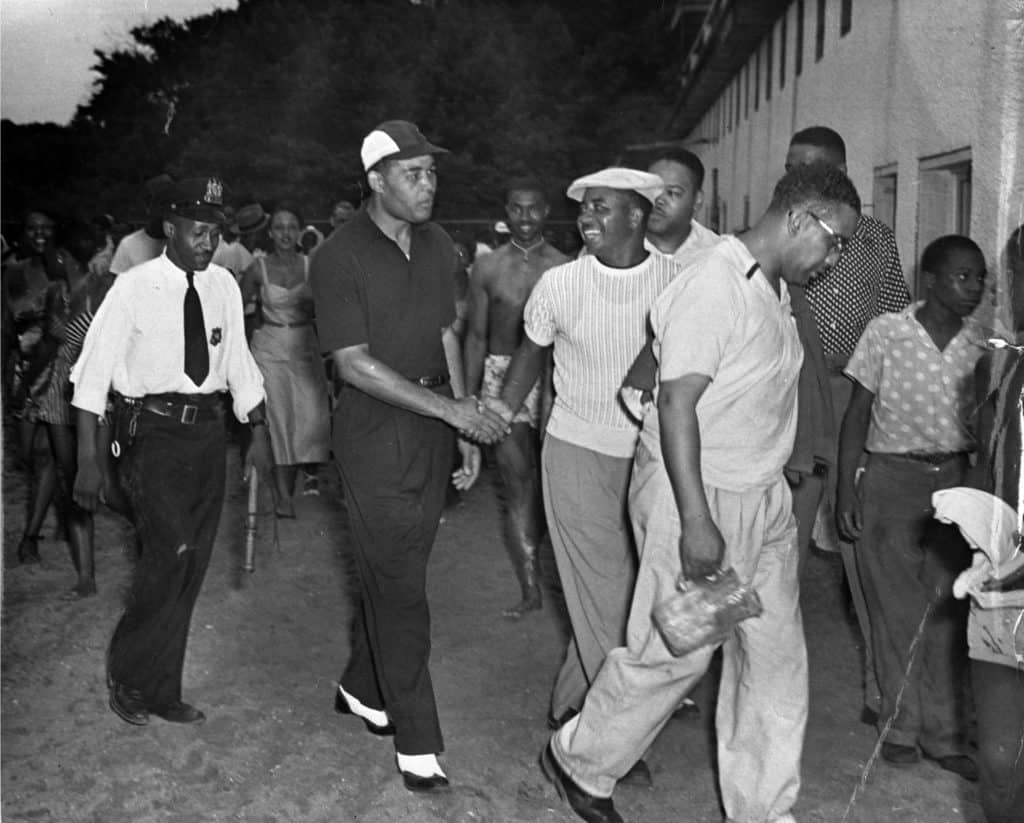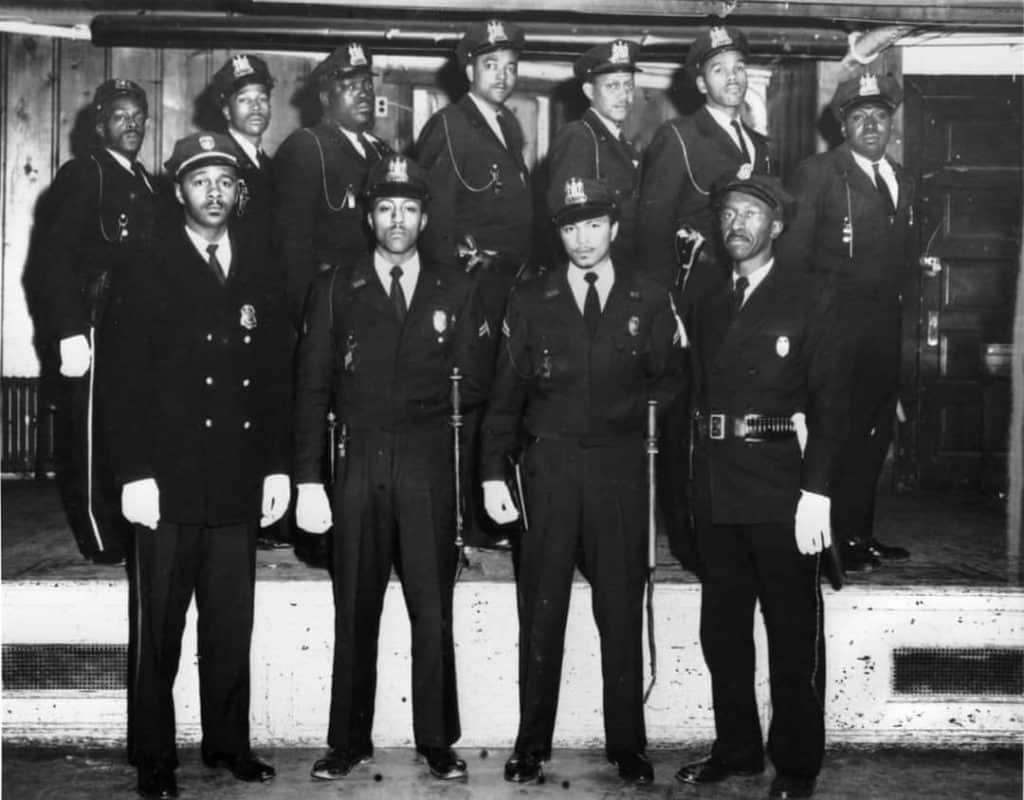Bringing the Beach to Downtown
Mural to Preserve Legacy of Carr’s Beach
By Steve Adams
Imagine a giant beach party on the shores of Annapolis, where music legends perform live for maximum-capacity crowds—a party so popular, some 60,000 people have to be turned away at the gate. That was the reality at Carr’s Beach in 1956 when Chuck Berry came to town.
If you’ve ever visited the Annapolis Neck Peninsula, looking out at the Bay Bridge to the north and Thomas Point Lighthouse to the south, there’s a good chance you’ve even driven past the Carr’s Beach site. What is currently the gated condo community of Chesapeake Harbor once was a popular beach destination for African-Americans, playing host to virtually all of the country’s most famous Black musicians.
But as time passes and first-person memories of experiences at the beach and concert venue are lost with each passing year, the Maryland Cultural and Conference Center (MC3) is working to celebrate and preserve its remarkable history and legacy.
MC3, formerly known as MTPA, is joining forces with muralist and Annapolis native Comacell Brown, aka Cell Spitfire, to memorialize Carr’s Beach with a giant piece of art. The installation is being called One Annapolis: A Community Art Project and features a vibrant, 150-foot-long mural that Brown will begin painting on the blank wall next to MC3’s outdoor venue StageOne at Park Place next week.
“My reaction was pure excitement and thankfulness [when MC3 reached out] because I wasn’t born early enough to experience Carr’s Beach in person but I’ve heard many stories from my grandparents about it,” said Brown. “As an artist and resident in Annapolis I feel honored to be able to partner with MC3 and highlight such a rare time in Black history from my perspective. It’s been a great learning experience for me to research the history of Carr’s Beach, and now being able to tell that story in Downtown Annapolis is icing on the cake.”
With research and the help of the Maryland State Archives, Brown chose six black and white images for the mural that he describes as “lights, camera, action”—images that will not only reflect the energy of the site, but, organizers hope, also compel the public to learn more about how culturally and historically significant it was during its nearly 50-year existence.
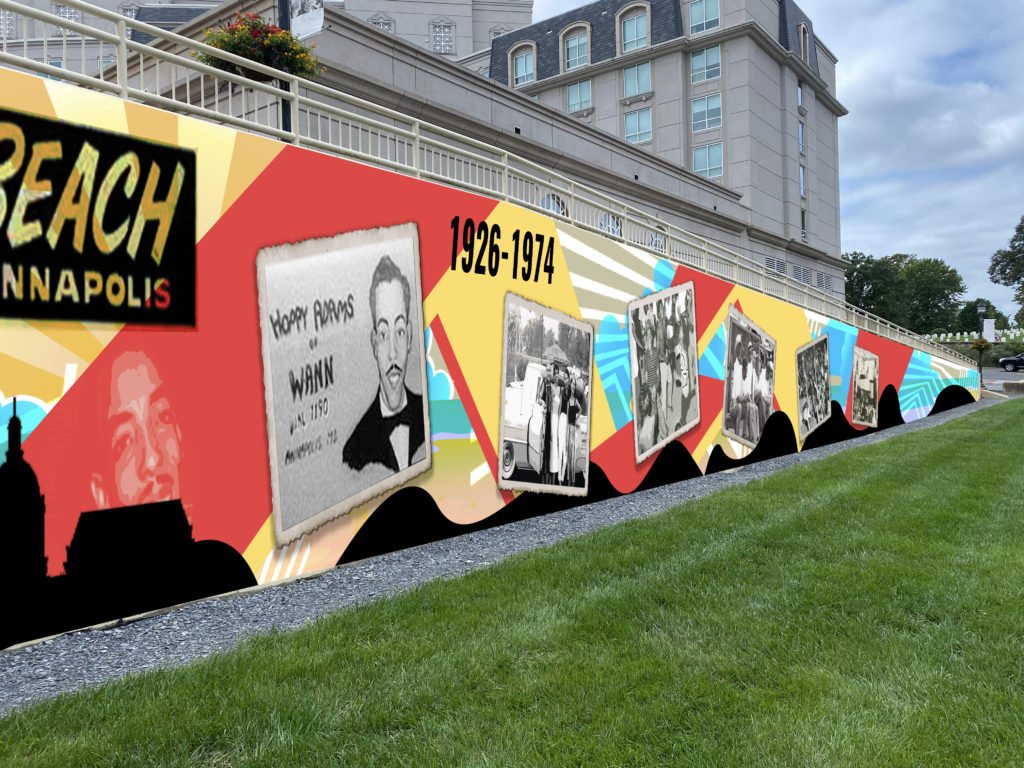
Those walking or driving by the mural will learn that Carr’s Beach was, first and foremost, a place where Black people could freely gather from 1926-1974. The mural conveys how recreational areas where African-Americans could go were limited during the Jim Crow-era, when most beaches were whites-only.
Founded in 1926 by Frederick Carr, a former slave who purchased 180 acres of waterfront farmland on the Annapolis Neck in 1902 and his wife, Mary Wells Carr, Carr’s Beach began as a simple beach retreat where Black families could swim, boat, fish, and socialize. It was operated by the Carrs’ daughter, Elizabeth Carr Smith, until her death in 1948. At that time her son, Frederick, partnered with William “Lil’ Willie” Adams, a prominent Black businessman from Baltimore, to form the Carr’s Beach Amusement Company and greatly expand its offerings. This included installing a midway line with rides and slot machines (which had quite fortuitously just become legal in Anne Arundel County) and opening a night club, Club Bengazi, that would be able to host Black performers.
While the pictures in the mural clearly show that Carr’s was a place for music and dancing, it’s almost unfathomable to believe just how many big-name musicians, and tens of thousands of their fans, were drawn to the site.
Often the last stop on the Chitlin’ Circuit, a route of performance venues named for a soul food dish and traveled by Black performers, Carr’s hosted this astonishing list of performers, according to local historian Janice Hayes Williams: Count Basie, Duke Ellington, Cab Calloway, Billy Eckstine, Ray Charles, Ella Fitzgerald, Sarah Vaughan, James Brown, Etta James, Jackie Wilson, Dinah Washington, Otis Redding, Lionel Hampton, Ike and Tina Turner, Lloyd Price, Stevie Wonder, Aretha Franklin, The Temptations, The Supremes, James Berry, The Shirelles, The Drifters, The Coasters, and Chuck Berry.
Concerts not only attracted busloads of attendees from far up and down the East Coast, but also, according to photos shared on the Remembering Carr’s and Sparrow Beaches website, a number of Black celebrities including boxer Joe Louis.
The crowds were so large, in fact, that Williams’ uncle, George Phelps Jr., founded the Special Deputy Sheriffs and hired 225 Black men to keep law and serve as crowd control during the venue’s busiest times.
In addition to seeing beachgoers and musicians in the mural, people will also see Hoppy Adams depicted. C. W. “Hoppy” Adams Jr. was a huge part of not just Carr’s Beach but Black broadcasting as a whole.
Born Charles W. Adams Jr. in 1926 in Parole, Hoppy, who was given his nickname due to a bum leg, ran a cab company before being hired as a disc jockey in 1951 for WANN, a local radio station. Founded by Morris Blum and only the second radio station in Annapolis, the station played the gospel, soul, and rhythm and blues music that appealed to a then-underserved African-American audience. This, combined with the hiring of the star DJ just as Carr’s began drawing bigger and bigger names, led WANN to begin broadcasting live performances and dance competitions hosted by Hoppy from the beach every Sunday afternoon.
With 50,000 watts of power and Hoppy’s charisma, the station claimed to serve “the largest Negro market in America outside of New York,” according to a flier donated to the Smithsonian, and brought the sounds of Carr’s Beach to “more than 600,000 Negroes spending more than $250,000,000 a year.” It became a more popular place to perform and visit than ever before.
MC3’s Director of Programming Jemma Lehner thinks now is the ideal time to celebrate the significance of Carr’s Beach. “During a time of racial segregation, the beach served as a space for Blacks to gather, perform and entertain free from racial prejudice,” she said. “Today, it’s rarely recognized for what it was: a defining moment in Annapolis’s history. So, as the racial outcries of 2020 have led many organizations to rethink their strategy for combating inequality, MC3 decided to start with the often-glossed over history of Black performing arts in Annapolis.”
The Park Place venue hopes to have widespread appeal, as Carr’s Beach did, “because MC3 is dedicated to providing equitable access to innovative and dynamic arts programming now and in the future,” says Lehner. “When the new cultural and conferencing center is built, it will be the first entertainment venue in Annapolis since Carr’s Beach that will be able to present world-renowned artists and fill over a thousand seats. This year, MC3 has a full season of programming prepared at StageOne where all audience members will sit adjacent to the new mural and remember the importance of inclusivity and equity in the arts.”
Access is also on the mind of Annapolis Mayor Gavin Buckley, who announced in February that the site of Carr’s Beach is on his list of upcoming projects. “We have a plan to provide [public] access, and we are working toward a plan that will bring added amenities,” his newsletter proclaimed. Details have yet to be released.
At Park Place there will be a celebration of the mural featuring Black, Indigenous, People of Color (BIPOC) performers and a new dance choreographed by MC3’s resident dance company, The Company at MC3, to the music of artists that performed at Carr’s Beach; a date is forthcoming.
MC3 aims to not only memorialize Carr’s Beach through the mural, but also rekindle the excitement for the arts and sense of community that it fostered. Future events will be centered at the site of the mural including the recently announced Juneteenth celebration (https://bayweekly.com/annapolis-to-host-first-juneteenth-festival/).
“Two of MC3’s core values are, Where Business Meets the Arts and Creating a Sense of Place, which is exactly what Carr’s Beach brought to the city of Annapolis so many years ago,” says Lehner. “The beach served as an economic engine for the city by attracting thousands of tourists and by creating hundreds of jobs, and it also built a sense of community. MC3 hopes to provide those same types of benefits to Annapolis. Our ultimate goal is to create an iconic gathering place for the community in the middle of the Annapolis Arts and Entertainment District and, by doing so, help invigorate the overall arts culture of Annapolis and Anne Arundel County.”
Watch the Artist in Action
The public is invited to watch the mural installation take place from April 6-16, at the StageOne Lawn at 3 Park Place in Annapolis. Follow @MC3Annapolis on social media for details.
Learn More About Carr’s Beach
- Watch MC3’s YouTube video, https://bit.ly/3m1DuGI
- Watch Summers Remembered: Carr’s Beach video, https://bit.ly/2PI5SBq
- Learn more about Hoppy Adams at https://hoppyadams.org/
- Read Janice Hayes Williams’s article: http://upstart-annapolis.com/ago-carrs-beach/
Donations accepted: One Annapolis: A Community Art Project https://gofund.me/1539998a

